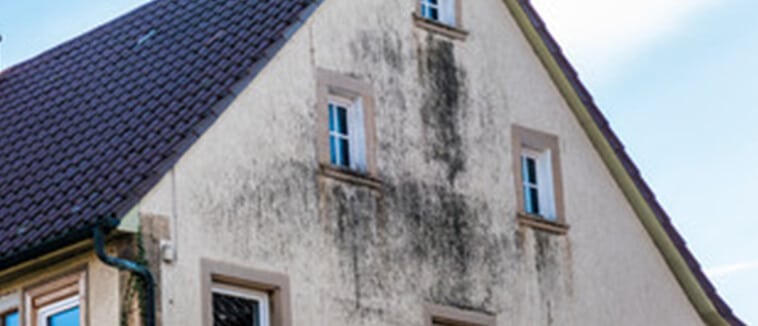
Is it true – does hydrogen peroxide kill mould?
Hydrogen peroxide, the combination of hydrogen and oxygen is effective in removing mould but does not actually kill it. Hydrogen peroxide comes in many different forms and different concentrations. You can find hydrogen peroxide in what is known as household peroxide which has a 3% hydrogen peroxide concentration, all the way up to industrial strength solutions which can contain 90% hydrogen peroxide.
When hydrogen peroxide is applied to mould, it releases oxygen at a rapid rate, causing the surface of the mould to oxidize and decompose. From an EPA perspective hydrogen peroxide is said to remove the mould but not necessarily kill it. What is visible will be removed but the underlying cause may not be treated.
Advantages of hydrogen peroxide over other methods
At first glance, the household variety of hydrogen peroxide or the 3% solution has many advantages over other household solutions. These include-:
- Easily penetrates porous surfaces whereas, some other mould treatments such as bleach, do not. This allows the solution to remove any traces of mould contained beneath the surface
- Kills viruses and bacteria making it a strong disinfectant
- Does not generate toxic fumes nor leave a toxic residue behind
- Can be used on all materials
- Easy to obtain and relatively inexpensive
- Environmentally neutral in as much as it does not leave any pollutants behind.
Are there any negatives to its use?
While reasonably effective in removing mould from sight, hydrogen peroxide does have some drawbacks: the key one being that it does not kill mycotoxins. Some mould varieties contain these dangerous carcinogens and while the visible evidence may be removed the mycotoxins may remain. Mycotoxins are potentially very harmful substances found in some mould varieties. Mycotoxins have been associated with such diseases as liver cancer and kidney failure as well as having adverse effects on the brain and nervous systems. If there is one single reason not to use hydrogen peroxide for removal, it is due to its inability to kill mycotoxins.
Other disadvantage in relation to using hydrogen peroxide to remove mould include-:
- Tends to have some bleach like qualities which may cause discoloration of some items
- Can be an irritant to the skin
- Packaging and storage can be a problem as hydrogen peroxide is not stable in sunlight
- Contaminated containers are liable to burst
- Will damage surfaces that are not acid stable
Safety measures you should take
While hydrogen peroxide is non-toxic, care still needs to be exercised. Steer clear of hydrogen peroxide solutions over 3% and always wear gloves when applying hydrogen peroxide as it can cause irritation to the skin
Is hydrogen peroxide mould Kryptonite?
No. While hydrogen peroxide certainly can remove mould it will not kill it nor kill the harmful mycotoxins that often reside within it. There are better alternatives that will deliver better results in the medium to long-term. Any treatment program should aim to prevent the mould from returning as much as removing it from sight.
Preventing the Mould from returning
Hydrogen peroxide will remove mould but it won’t kill it. So unless you take steps to prevent it from returning it will almost certainly reappear. Prevention will entail understanding why the mould grew in the first place and establishing the underlying cause for that growth. This may require some investigation of the immediate and surrounding areas. Factors t would include any obvious water leaks, airflow and the amount of natural light in the area. Your investigation may lead you to investigate gutters, pipes and potential roof leaks.
For serious cases – Call The Experts
Mould can be a particularly annoying and damaging problem to have. At best using hydrogen peroxide will serve as a stop gap measure as it won’t kill the mould completely. To ensure that the mould problem is not only fixed in the short term but eradicated entirely you will need to identify the source of the problem and eliminate it. The best course of action in many instances is to put the problem in the hands of mould treatment experts.
The team at The Mould Doctor.com.au are experts in mould cause identification, remediation,and removal. Give us a call today to arrange a consultation and take the first step to getting your property entirely free from mould and mildew.